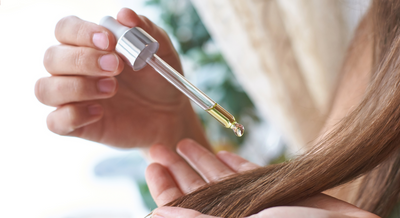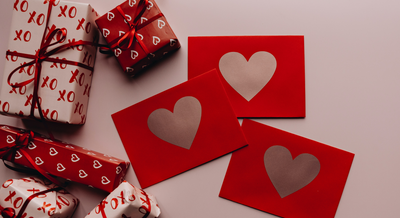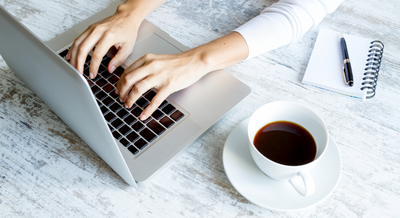We spend a lot of time here talking about maintaining your hair’s moisture levels and preventing dryness, and for good reason.
The hair requires moisture to maintain its weight and structure, and without it the hair becomes limp and unmanageable. Furthermore, when the hair is in an excessively dry and dehydrated state, the hair strand is at a significantly greater risk of damage and breakage, leading to split ends and broken hairs.
To put it simply, moisturized hair is healthy hair!
While some of us are lucky enough to never have to worry about dryness due to having naturally oily hair, the vast majority of us need to make a conscious effort to ensure our hair is properly moisturized and hydrated on a daily basis.
This is especially true for those of us that frequently heat style our hair or undergo regular chemical treatments, as heat styling and chemical treatments can gradually erode the outer cuticle layer, which is responsible for keeping all that moisture and hydration locked in.
To help you stay on top of your hair moisturization game, we’ve compiled a handy list of do’s and don’ts when it comes to your daily hair care routine!
Do: Condition After Every Wash
This may seem like obvious advice, but you’d be surprised at how many of those with naturally oily hair think that they can get away without a conditioner. Shampooing strips the hair of its natural oils and hydration, and conditioner is required in order to replenish that lost moisture, even for those with oily hair. In fact, excess sebum production by the scalp is oftentimes caused in response to dryness and dehydration, as the scalp is overcompensating its oil production in order to balance hydration levels. Thus, using a conditioner on an oily hair type may actually help to normalize oil and grease production!
Don’t: Wash and Condition Everyday
Despite the fact that conditioner replenishes the hair’s moisture and counteracts any drying or damaging effects caused by shampooing, washing your hair on a daily basis is a recipe for severe dryness and damage. Even the richest conditioner is no match for hair that has been subjected to daily cleansing, so make sure to space out your hair washing as much as possible.
Do: Regularly Use Hair Masks and Leave-In Conditioners
It’s no secret that we are huge fans of adding hair masks and leave-in conditioners to your hair routine, and we think that these two products are some of the most effective methods to quickly resolve any dryness issues. For those with hair that is naturally dry, have recently undergone a chemical treatment, or have experienced a sudden change in weather or climate, a simple conditioner post-shampooing might not be enough. Using a leave-in conditioner or a hair mask is a perfect way to infuse the hair with long-lasting moisture that penetrates the hair strand at a deep level.
Don’t: Fall Asleep with Wet Hair Without Taking Precautions
An overnight hair mask is one of the very best ways to infuse your hair with an incredible burst of hydration, but you’ll need to take several steps to do this correctly. When the hair is wet or damp, it becomes flexible and elastic, losing its rigid form and making it much more susceptible to breakage. While we sleep, its common to toss and turn, and all this tossing and turning can easily damage the structure of our wet hair. To prevent this, you can take a couple of preventative measures, such as securing the hair in a hair mask, tying the hair in braids, and/or sleeping on a silk pillowcase that reduces friction.
Do: Invest in High-Quality, Technologically Advanced Styling Tools
In an ideal world, you’d heat style your hair as little as possible to prevent dryness or damage. However, in the real world, we likely have to utilize heat styling techniques on a daily basis, which puts us at a great disadvantage in the struggle to walk that fine line between dry hair and moisturized hair. Thankfully, hair styling technology has come a long way in the past few decades, and today’s tools feature advance heat technology that helps to prevent hair dryness while promoting hydration levels. Look for tools that utilize infrared technology, which heats the hair from the inside-out to preserve and protect the outer cuticle layer, as well as ionic technology, which negates the drying effects of positive ions to keep moisture locked within the hair strand.
Don’t: Over-Style Your Hair
Again, even the most gentle and advanced styling tool can cause damage to your hair if used too frequently, so make sure to limit styling sessions as much as possible. Additionally, the time spent styling within a given session is just as important as the number of times styling the hair, meaning that those with thicker, more textured hair need to use higher temperatures and speeds to keep the styling session short and gentle. For an added degree of protection, utilize a heat protection spray that can both coat the hair with a protective buffer from heat damage and also add a little extra moisture to the hair
Do: Embrace Hair Oils and Serums
If you haven’t already, it’s time to explore the wonderful world of hair oils and hair serums. Today’s hair care market is filled with countless oil and serum products that impart lightweight, non-greasy moisture while allowing your hair to maintain its shine and softness. These products provide versatile means of use, whether as a pre or post-styler, and can be carried in a purse or pocket to be used on an as-needed basis if your hair is feeling dry towards the middle of the day.
Don’t: Use Drying Hairsprays or Finishing Products
This goes without saying, but make sure to cut out any hairsprays or finishing products that contain high amounts of alcohol or drying ingredients that further dry out your hair. Some hairsprays may work initially to tamp down frizz, but the amount of drying ingredients within the spray can actually make the hair look frizzier and drier later in the day. Opt for sprays that contain hydrating and healing ingredients such as aloe and panthenol.











